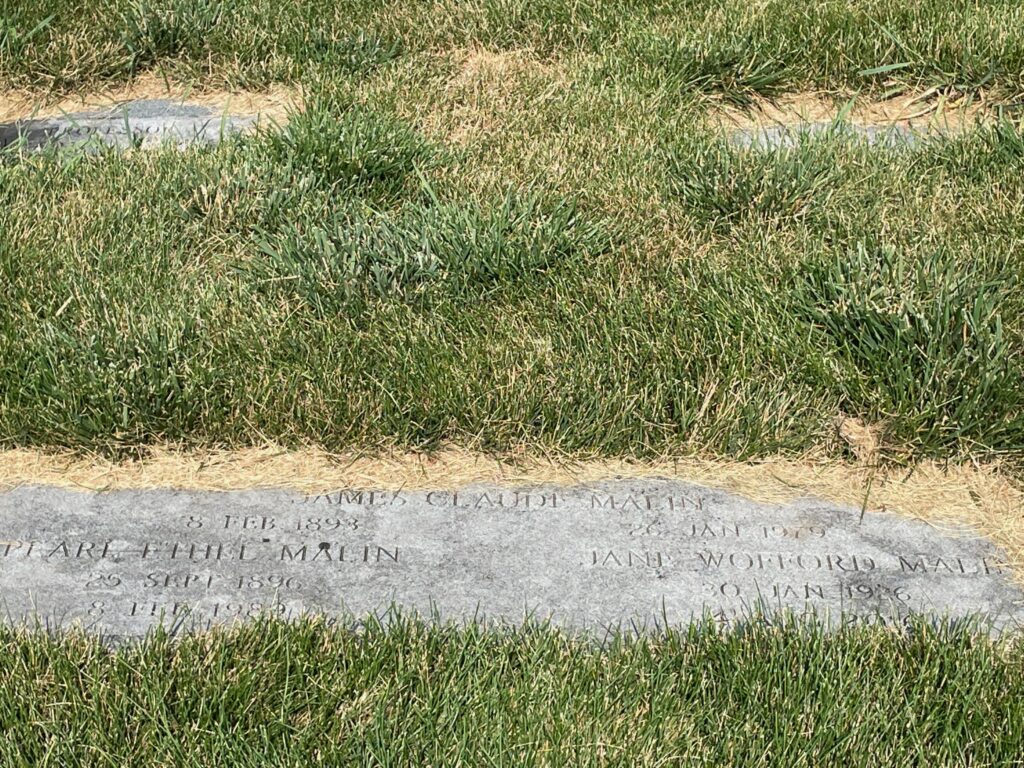Erik Visits an American Grave, Part 1,299
This is the grave of James Malin.

Born in Edgeley, North Dakota in 1893, Malin grew up in Kansas, with the family moving there in 1903. He was interested in the history of his home. He would make Kansas his life-long home and dedicate his fertile brain to figuring out why this region was so central to American history. But that took awhile. At first, he was working as a sheepherder on his dad’s farm. Not a fun life. Can see why he’d make different choices. He went to college in 1910 at Baker University in Kansas. He was at first a math major, then realized the error of his ways and switched to history. He taught for awhile in local schools and then enrolled in graduate school at the University of Kansas. He completed his Ph.D. and then Kansas hired him on as an assistant professor in 1921. He would teach there for his entire career, before retiring in 1963.
Malin became known as one of the premier historians of the American West, particularly the Great Plains. The Grassland of North America, published in 1947, is one of the first major books to center the Plains in American history. This is also one of the foundational books of environmental history, as the ecology of the Plains themselves are shown to be a major part of this history. In the wake of the Dust Bowl, it’s hardly surprising that this would start coming up with historians of the region, but someone had to actually do it first and that was Malin. A book titled Winter Wheat in the Golden Belt of Kansas might not sound exciting. In fact, although I can’t actually say having never read it, I doubt it is. But on the other hand, how do we understand the role of Kansas in American history without centering winter wheat? This is the kind of foundational work done by previous generations of historians that we today build upon. And by the 1970s, Malin was recognized for his key work in building the field by a world that had really begun to take environmental issues seriously. He was an early progenitor of history from the bottom-up, a term he used himself.
Malin also had a strong interest in the early political history of the region. So he wrote The Nebraska Question, 1852-1854 and John Brown and the Legend of Fifty-Six. Later in life, he became interested in larger questions of modern American history and so, in 1972, he published his last book, The United States after the World War. So he could also write some top-down histories too. Overall, just a very complete historian. Yes, of course he had some of the limitations of the time. Malin was not the equivalent of a modern historian of Native America, for instance, and there’s no question this is history by and for white people. It’s flawed, of course it is. But it still does have value. And even given his very real limitations as a mid-twentieth century white man, he did have important insights into 19th century Indian policy.
One area where Malin was a crank is that he hated editors. Like, he really hated them. So after about 1955 or so, he published his own works. That meant that no one read them because who would hear about them. As for me, I love editors. It’s rare that I don’t think the editor has a good point. I’d say I take the editor’s choice well over 90 percent of the time and if I don’t, I explain why. I make few claims to being a super smooth writer, though I work really hard at it and think I do write better than most historians. But that might be because I let the editors have their way.
Malin died in 1979. He was 85 years old.
James Malin is buried in Pioneer Cemetery, Lawrence, Kansas.
If you would like this series to visit other historians of the American West, you can donate to cover the required expenses here. Frederick Jackson Turner is in Madison, Wisconsin (I so want to see this grave!) and Ray Allen Billington is in Altadena, California. Previous posts in this series are archived here.


